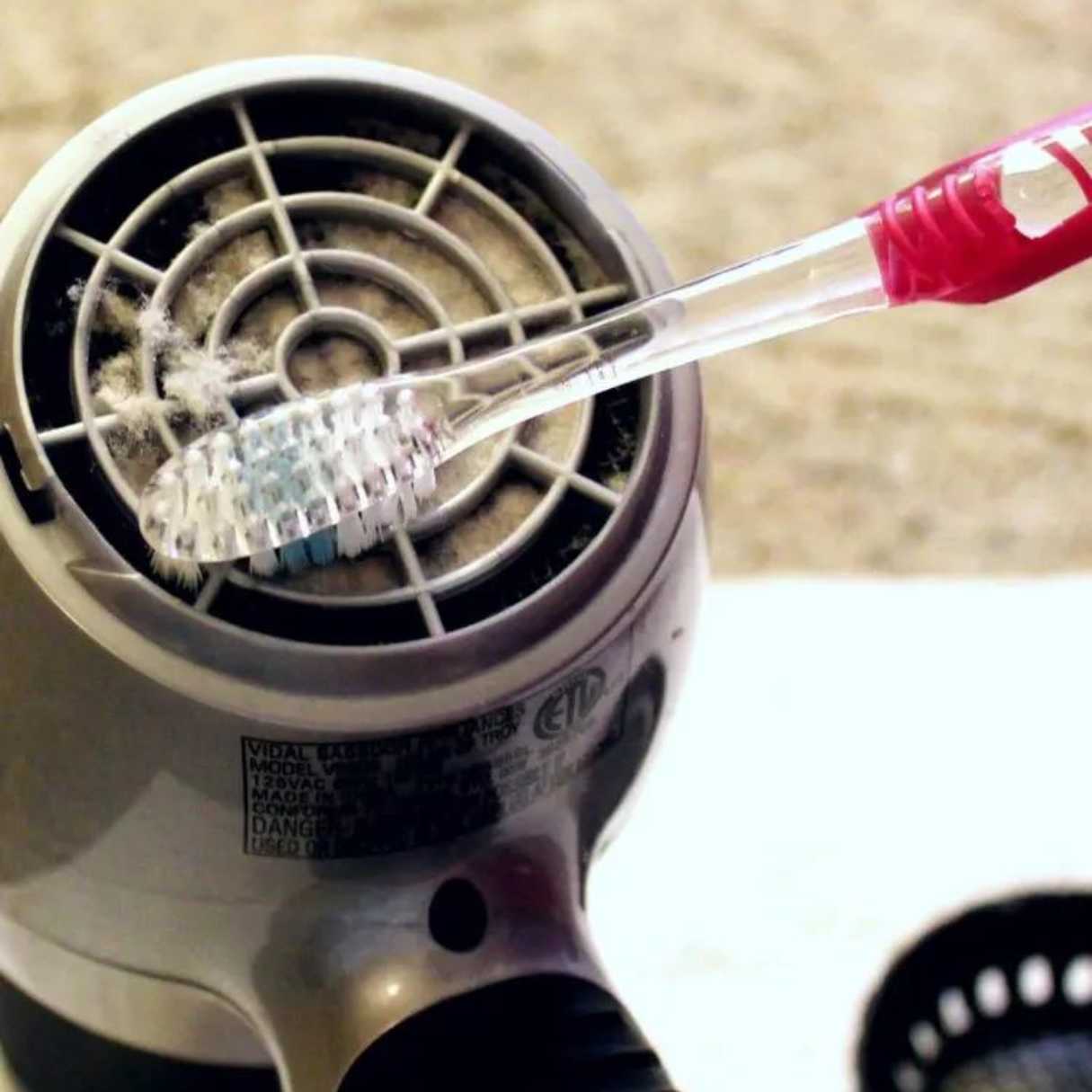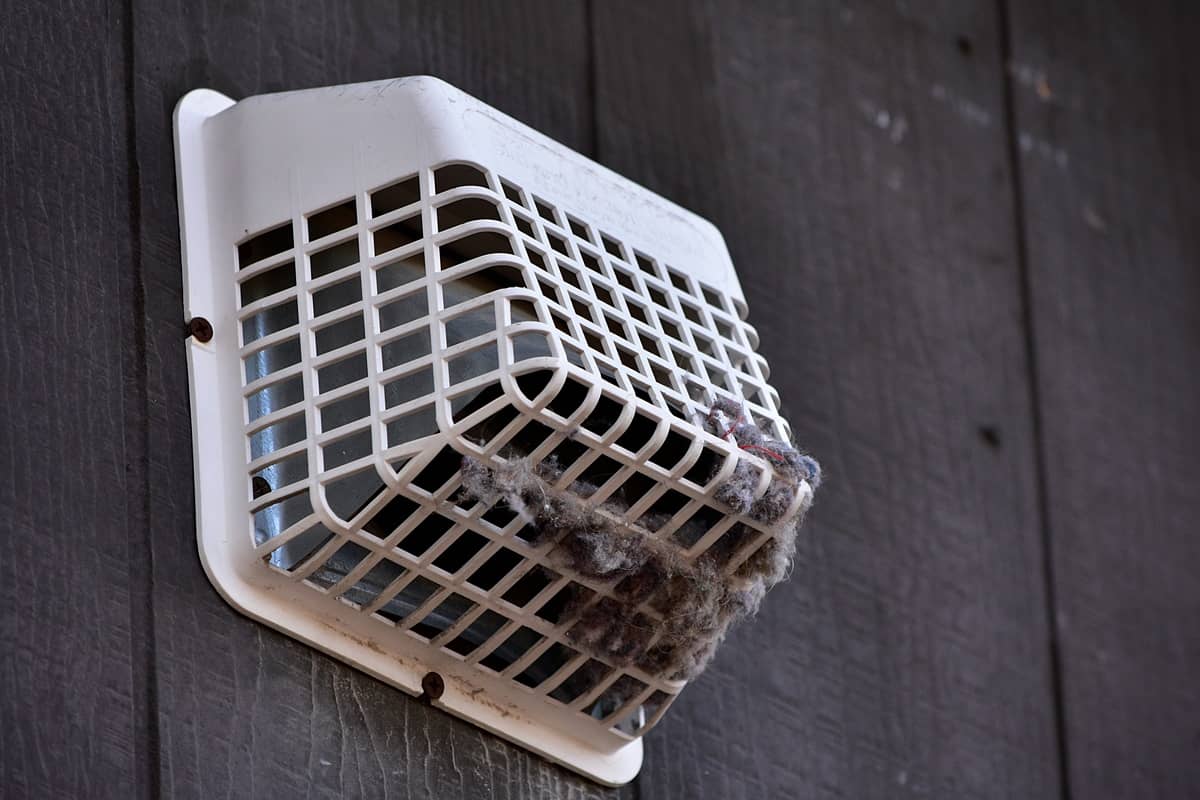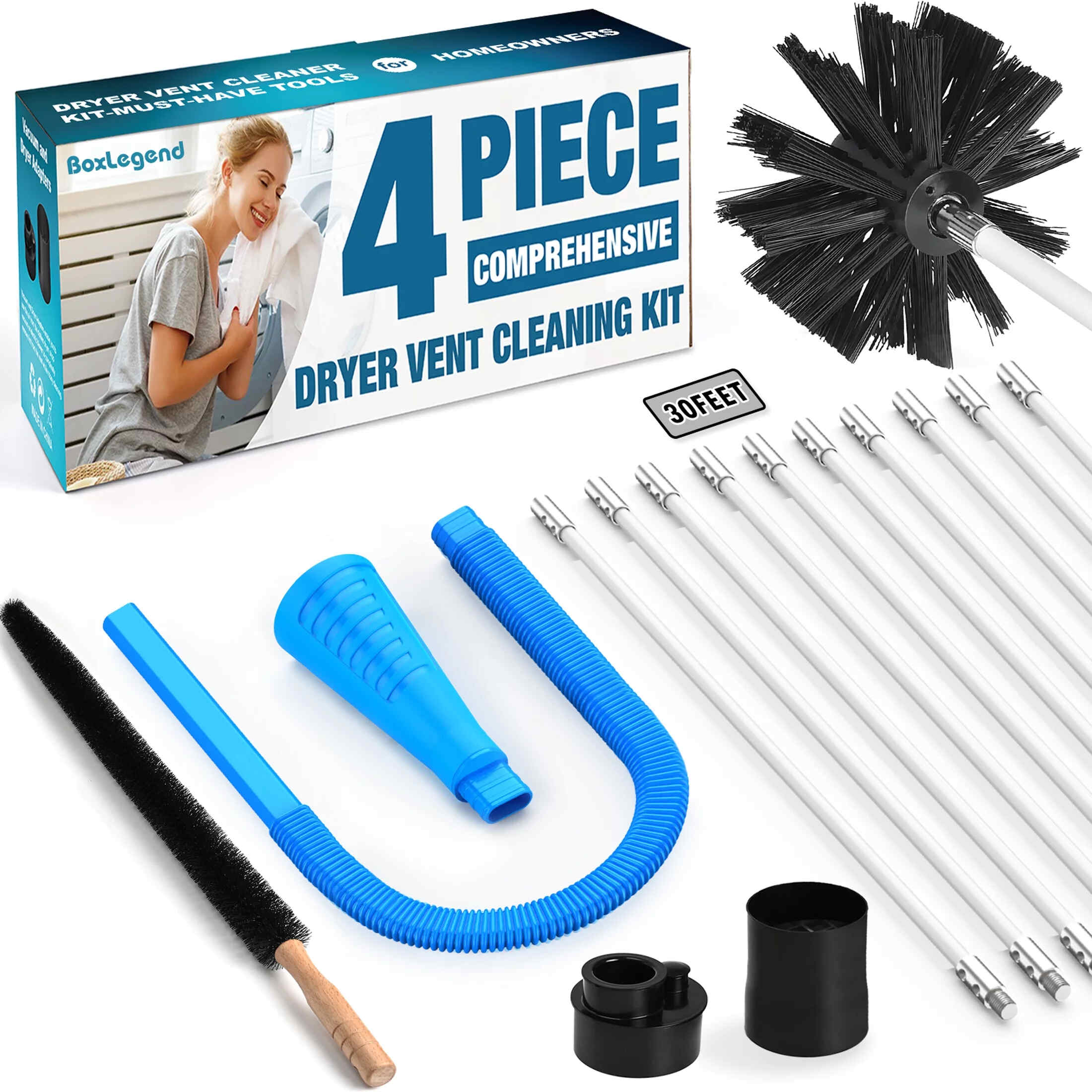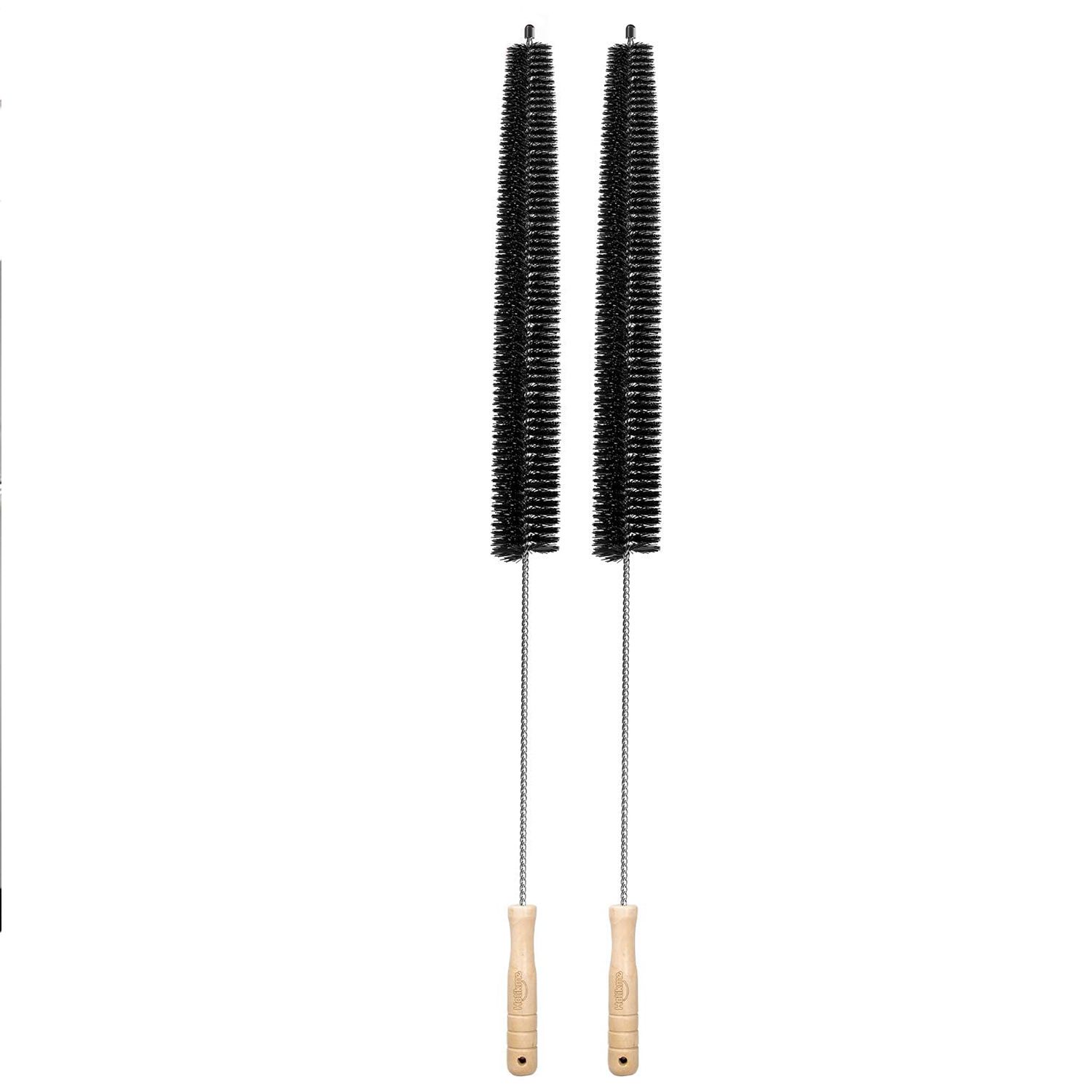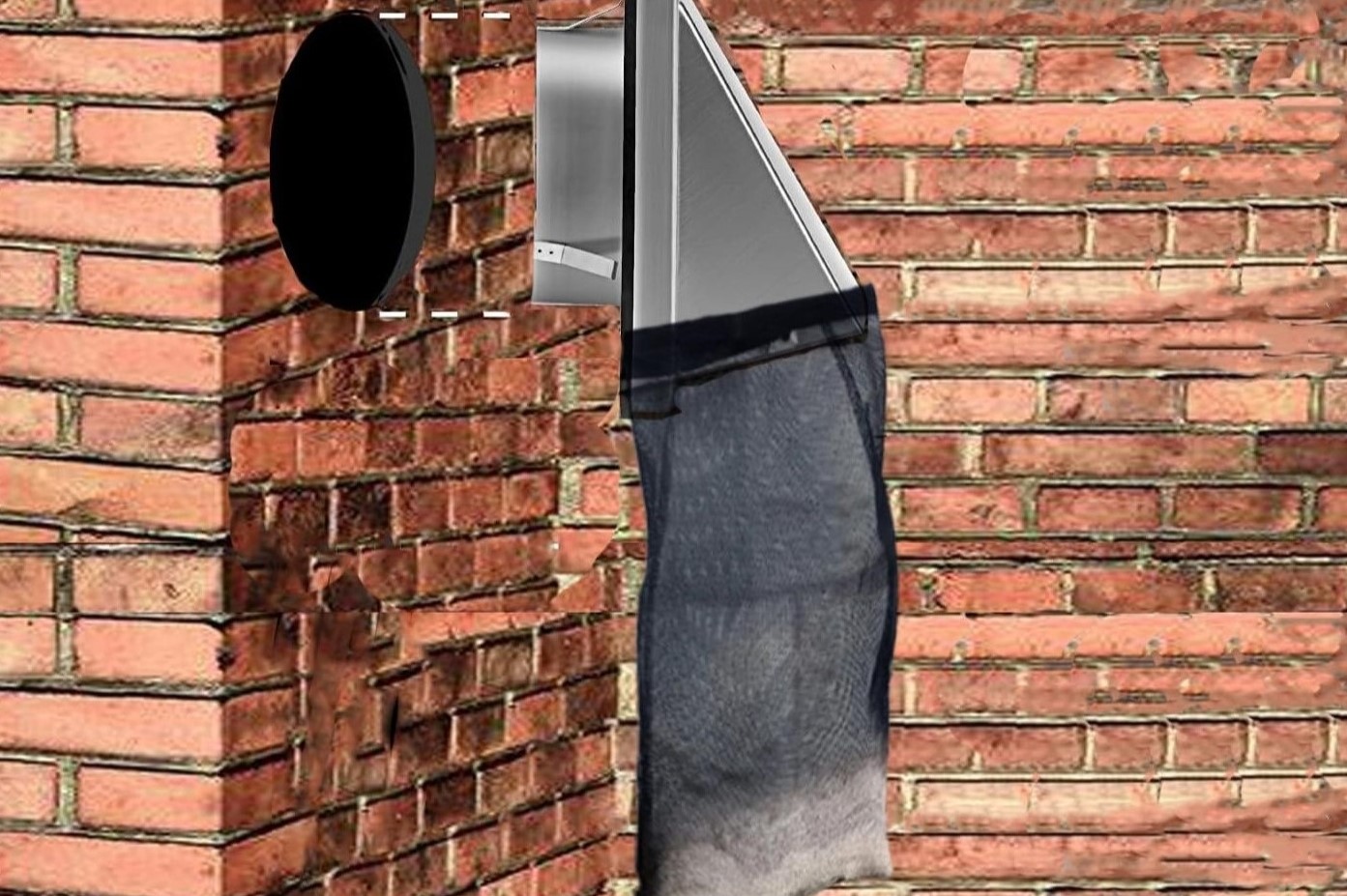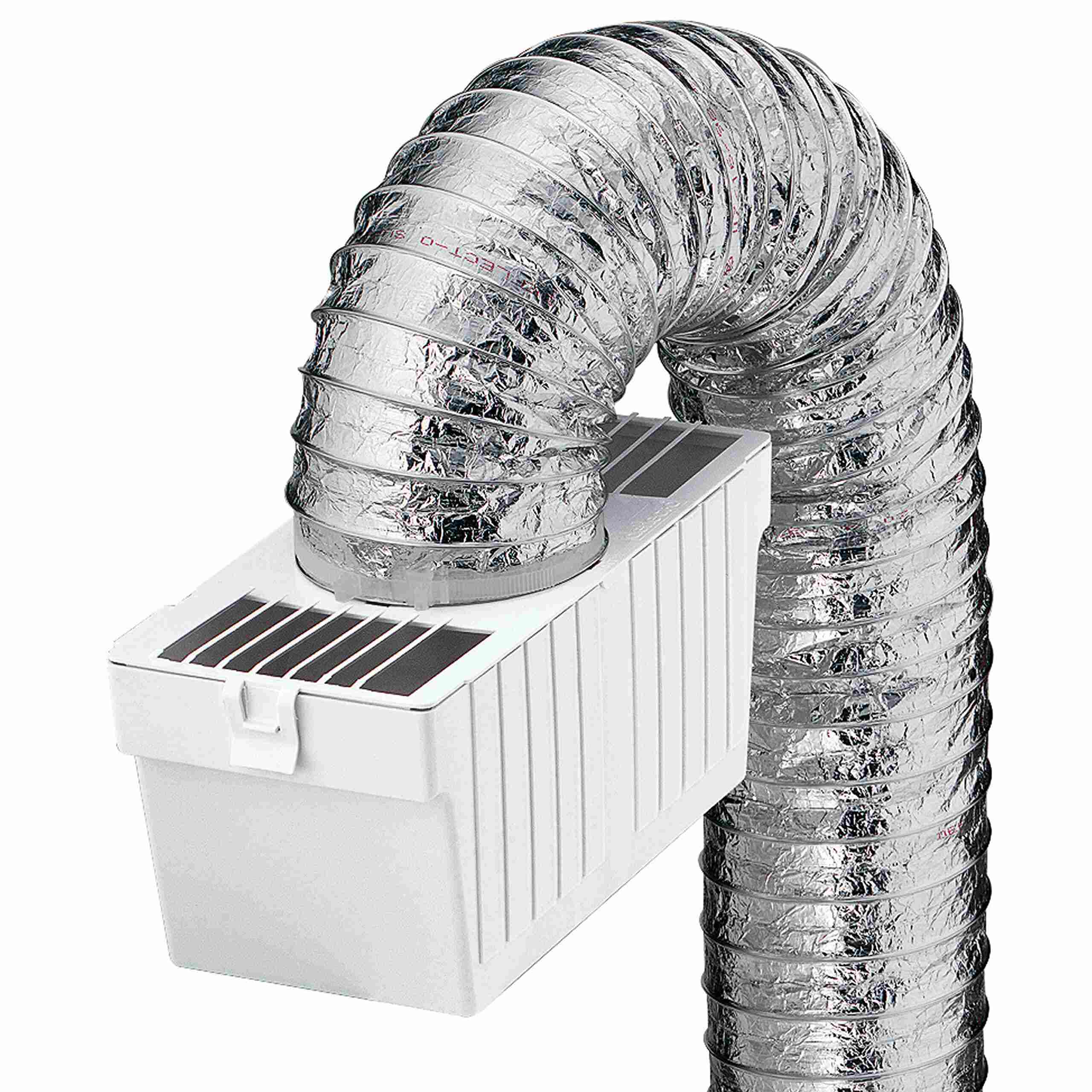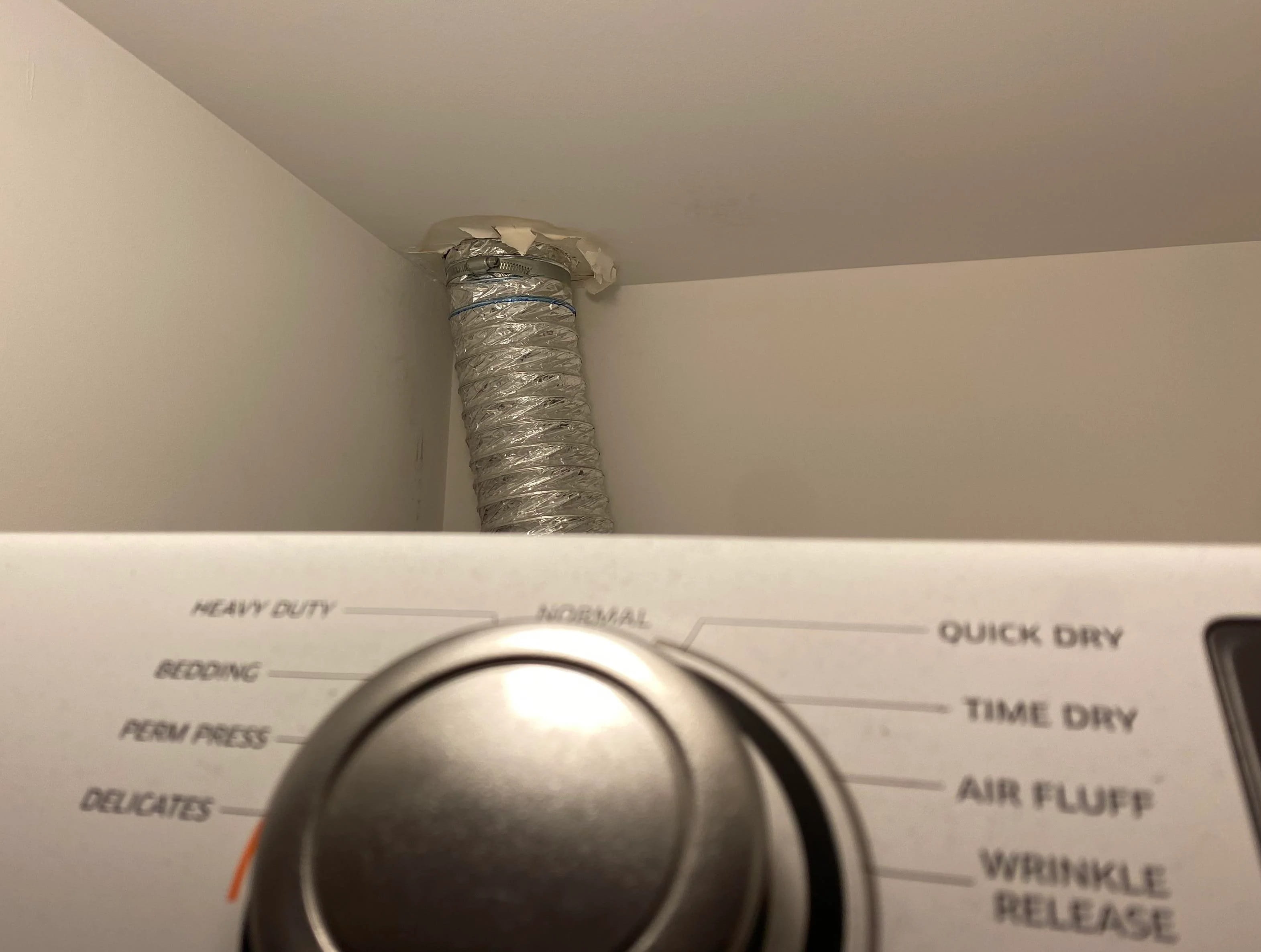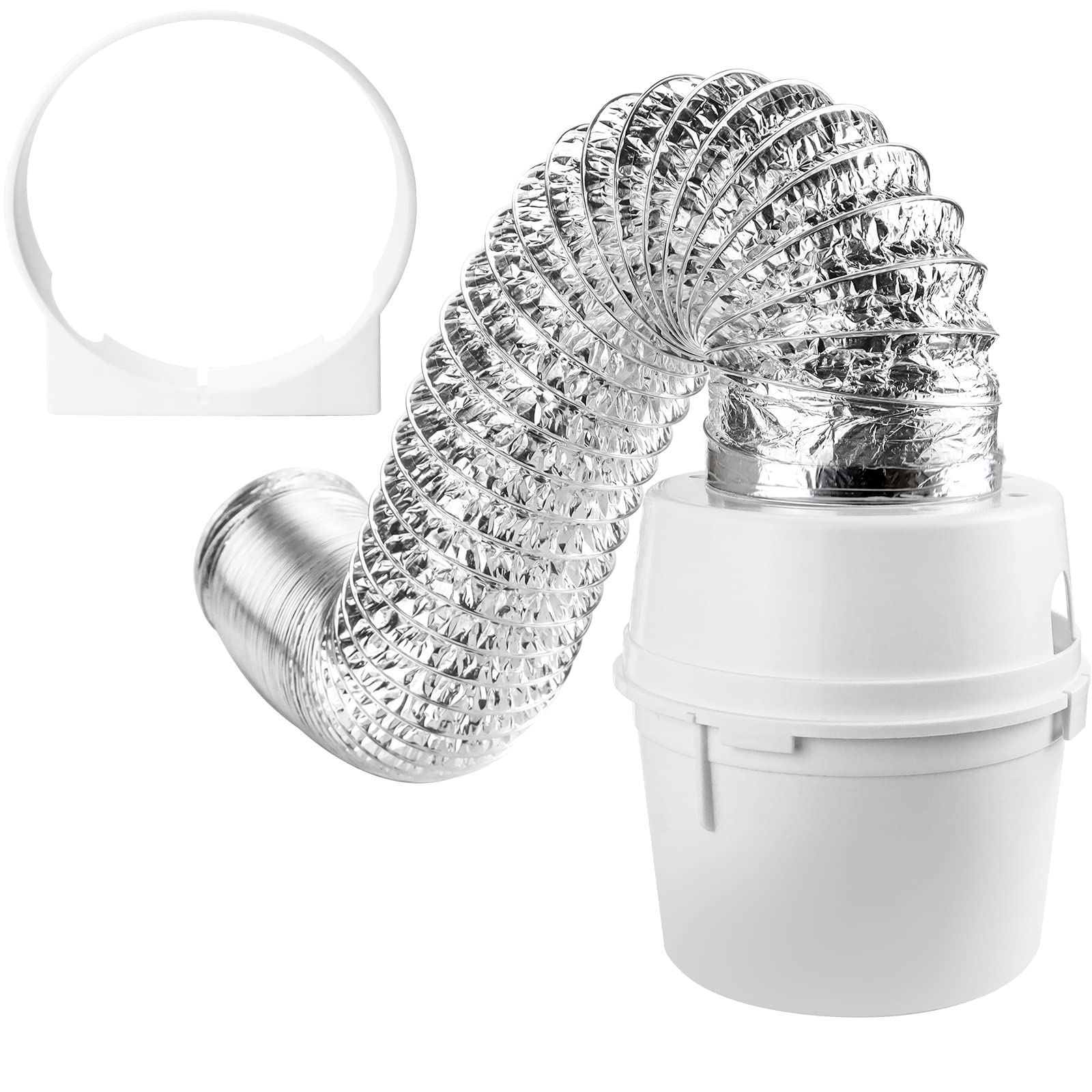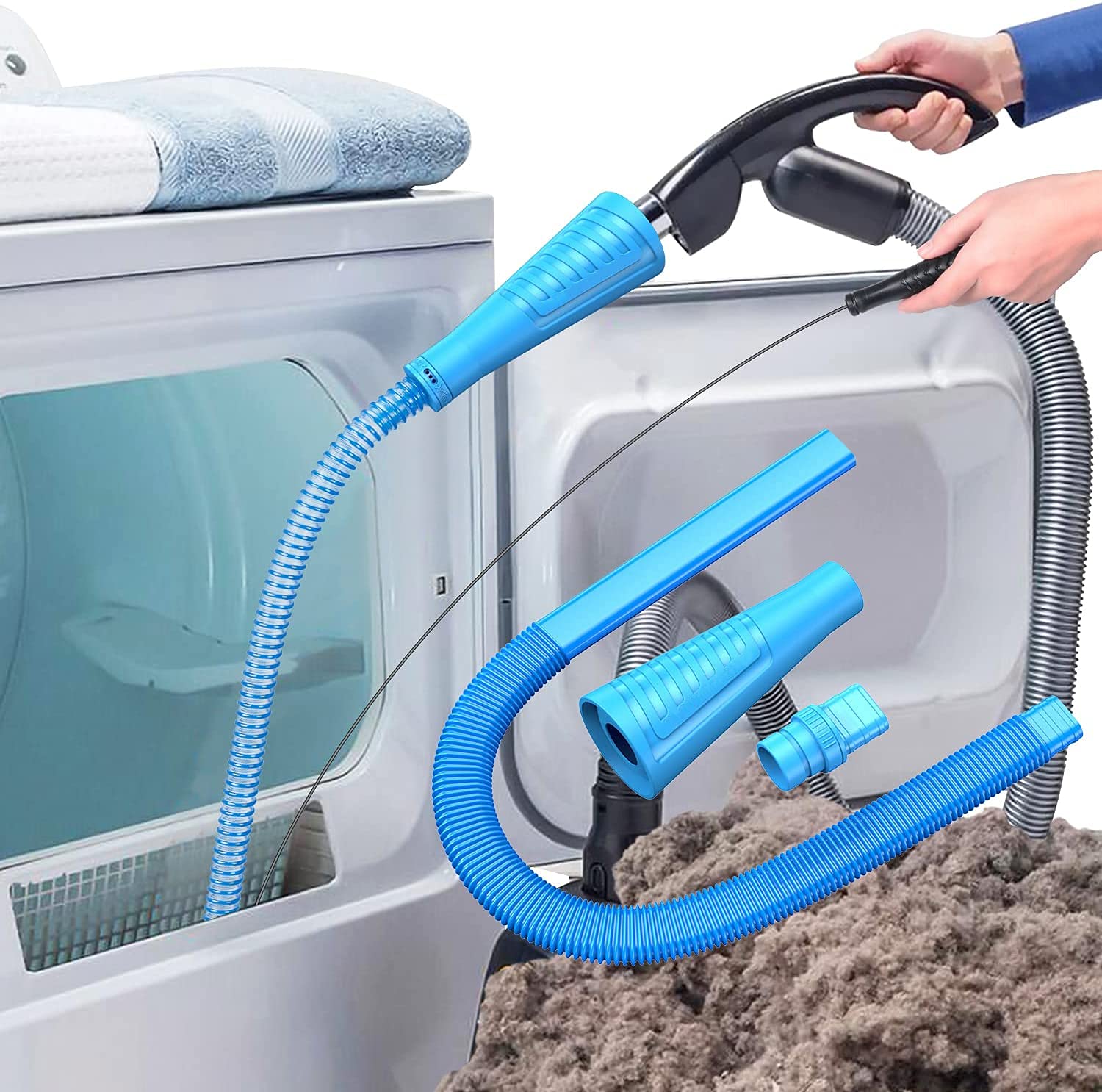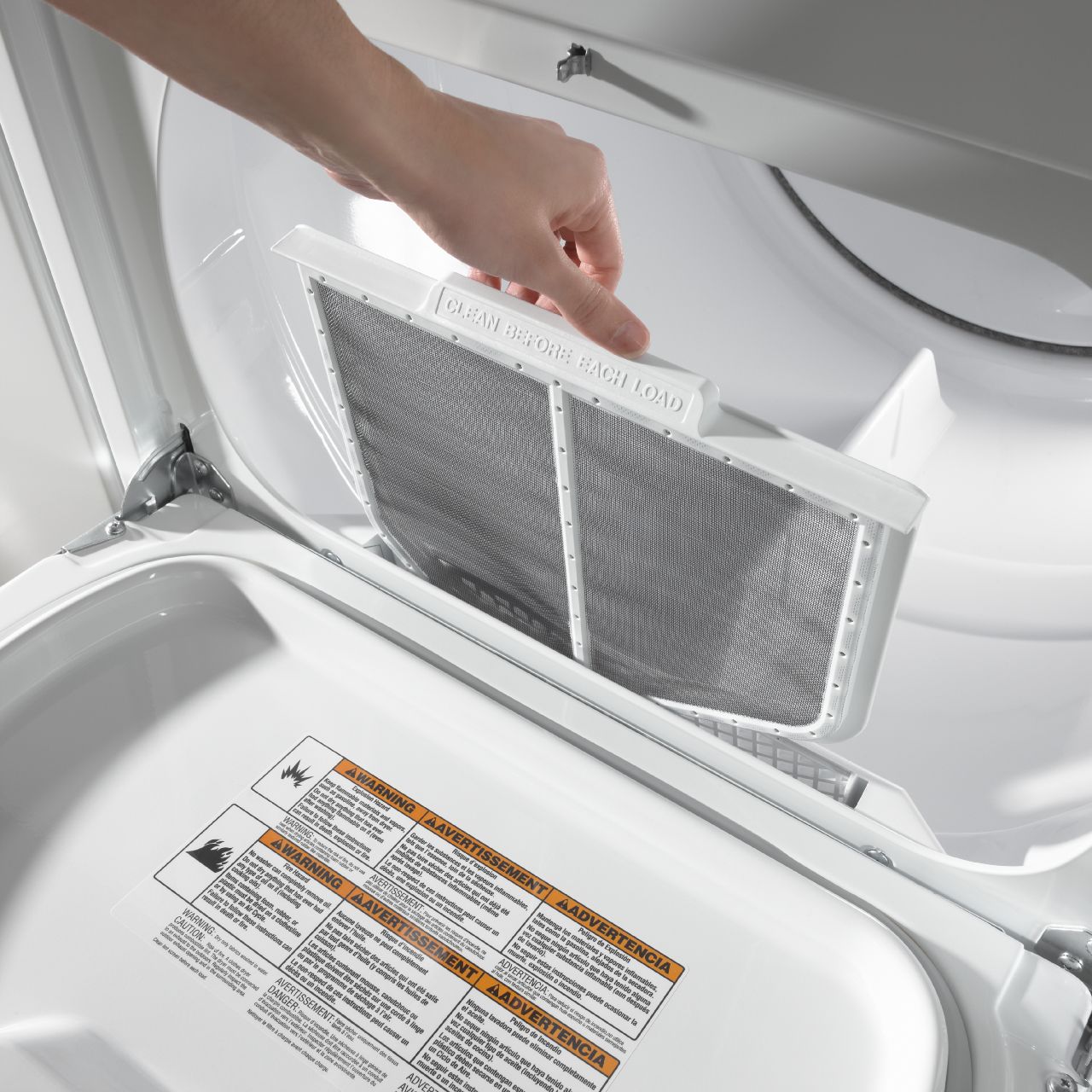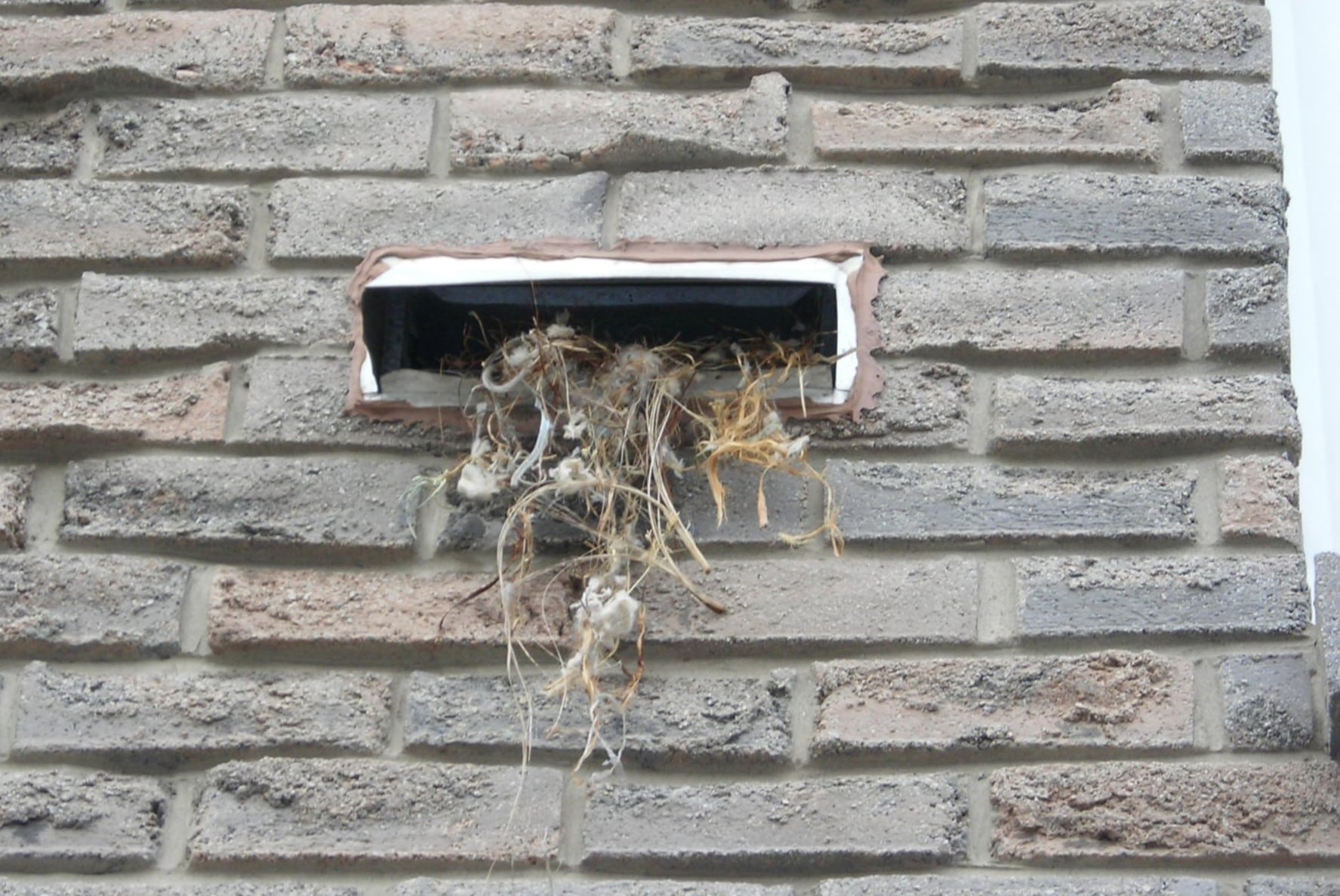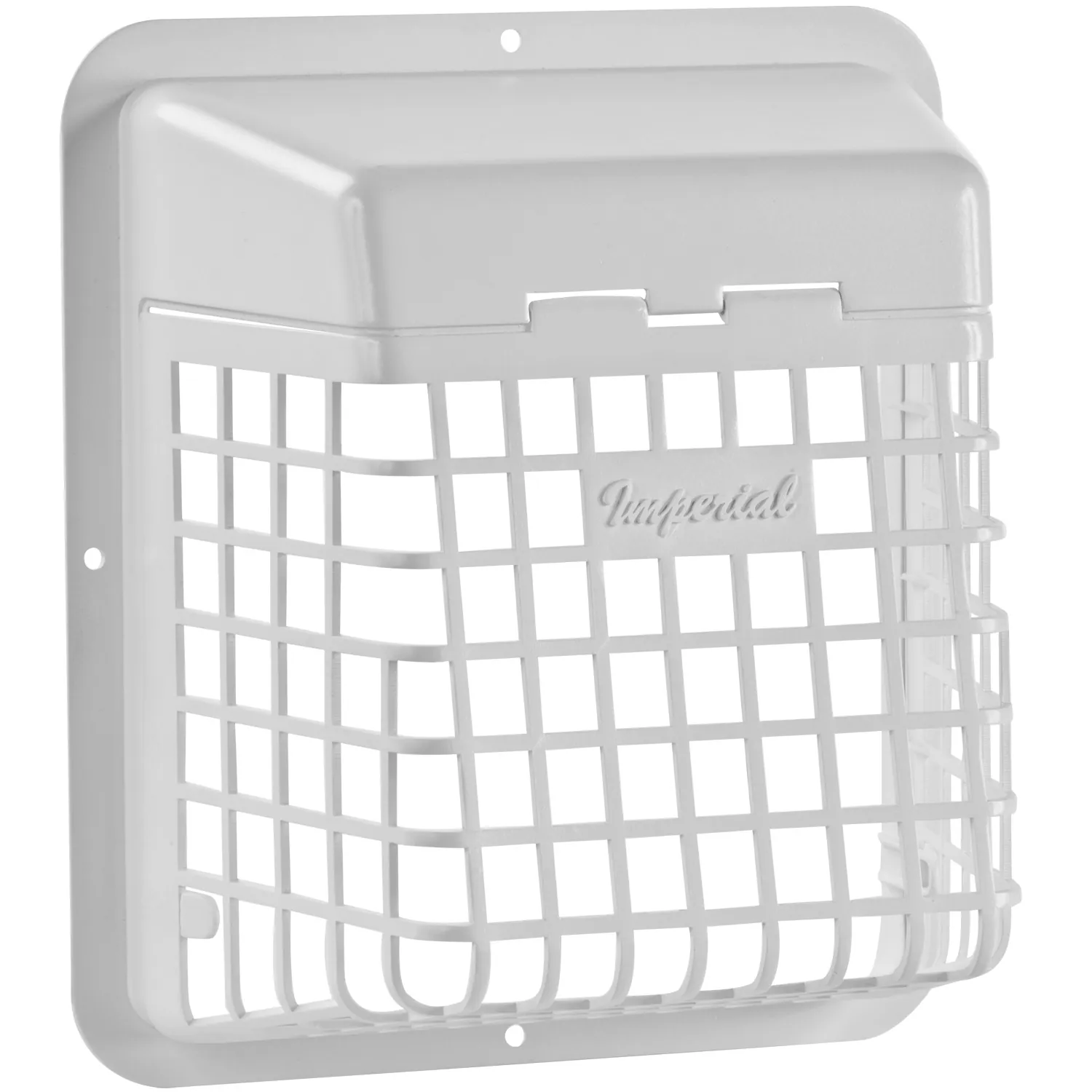Home>Home Maintenance>Why Is Lint Coming Out Of The Dryer Vent
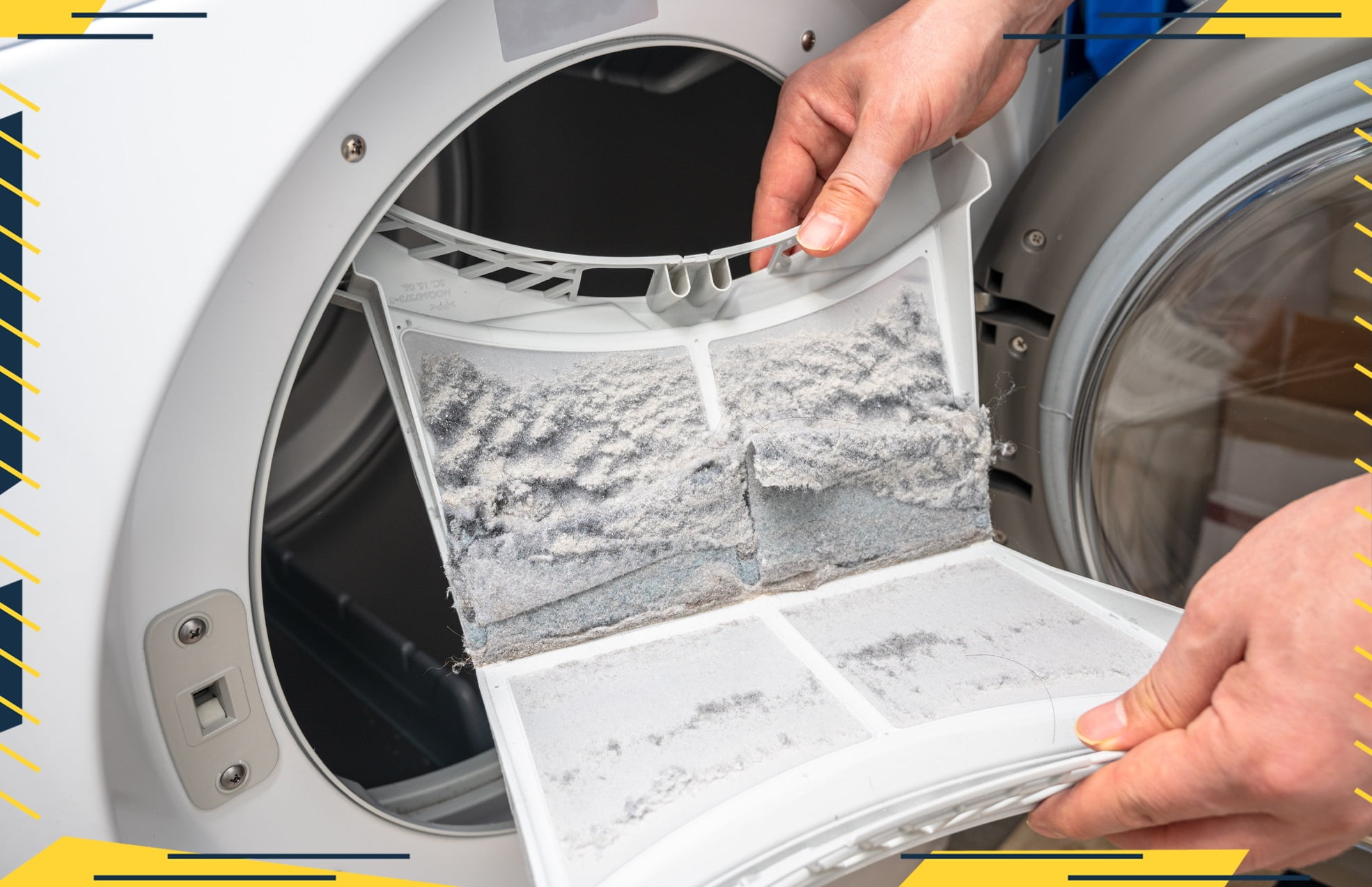

Home Maintenance
Why Is Lint Coming Out Of The Dryer Vent
Modified: March 6, 2024
Learn why your dryer vent may be producing lint and how to prevent it. Find expert advice and tips for home maintenance.
(Many of the links in this article redirect to a specific reviewed product. Your purchase of these products through affiliate links helps to generate commission for Storables.com, at no extra cost. Learn more)
Introduction
When it comes to home maintenance, one area that is often overlooked is the dryer vent. While it may seem insignificant, neglecting the care of your dryer vent can lead to a host of problems, including the release of lint into your home. That’s right, you may start to notice small particles of lint appearing in unexpected places, indicating that lint is coming out of the dryer vent.
Lint, a common byproduct of drying clothes, is made up of tiny fibers that separate from fabrics during the drying process. Typically, this lint is captured by the lint trap inside the dryer. However, when the dryer vent becomes clogged or obstructed, the lint can escape into the surrounding environment, causing a variety of issues.
Understanding why lint is coming out of the dryer vent is the first step in addressing this problem. In this article, we will delve into the causes, consequences, and solutions associated with lint escaping from the dryer vent. By equipping yourself with this knowledge, you can take proactive measures to maintain a clean and safe home environment.
Key Takeaways:
- Regularly cleaning the lint trap and vent line, and using the right materials, prevents lint from escaping the dryer vent. This ensures safety, efficient drying, and cost savings for your home.
- Ignoring lint escaping from the dryer vent can lead to fire hazards, poor drying performance, and health risks. Regular maintenance and cleaning are essential for a safe and efficient dryer.
Read more: What Comes Out Of A Dryer Vent
What is lint?
Lint is the accumulation of tiny fibers that are released from fabrics during the drying process. When you wash your clothes, small pieces of fabric become loose and separate from the garment. These fibers can range in size from microscopic to visible to the naked eye. As the clothes tumble and dry in the dryer, these loose fibers are lifted into the air and carried through the dryer vent.
Lint is composed of various materials, depending on the fabrics being dried. Cotton, wool, and synthetic materials like polyester and nylon are common sources of lint. The texture and color of lint can vary, but it is typically soft, fibrous, and light in color.
Due to its lightweight nature, lint can easily become airborne and spread throughout your home. It tends to collect in corners, crevices, and on surfaces, making it a common nuisance. Apart from being unsightly, lint can also pose potential health risks.
If inhaled, lint particles can irritate the respiratory system, particularly for individuals with allergies or respiratory conditions. In addition, the accumulation of lint can create a breeding ground for dust mites and other allergens, exacerbating indoor air quality issues.
Understanding the nature of lint and its potential impact on your home and health is crucial in taking the necessary steps to prevent it from escaping through the dryer vent.
The function of a dryer vent
A dryer vent plays a crucial role in the functioning of a clothes dryer. Its main purpose is to expel hot air, moisture, and lint from the dryer and direct it outside of the home. By doing so, the dryer vent helps maintain optimal drying efficiency and reduces the risk of fire hazards.
When you use a clothes dryer, warm air is circulated through the drum, speeding up the drying process. As it dries your clothes, the air collects moisture and lint from the fabrics. This hot, moist air is then expelled from the dryer through the vent system.
The dryer vent not only removes the excess moisture and lint from the dryer but also prevents them from accumulating inside your home. Without a properly functioning vent, the moisture and lint would be trapped in the laundry area, leading to mold growth, musty odors, and potential damage to your walls and flooring.
In addition to maintaining indoor air quality, a dryer vent also serves a critical safety function. Lint, a highly flammable material, can accumulate in the dryer vent over time. If the vent becomes clogged or obstructed, the airflow is restricted, causing the dryer to overheat. This can result in a fire hazard.
By providing an outlet for hot air, moisture, and lint, a well-maintained dryer vent ensures proper drying performance, extends the lifespan of your dryer, and minimizes the risk of fire. Regular inspection and maintenance of the vent system are essential to ensure its efficient operation.
Causes of lint coming out of the dryer vent
Lint escaping from the dryer vent can be attributed to several factors. Understanding these causes is crucial in addressing the issue and preventing further lint accumulation in your home.
- Clogged lint trap: The lint trap, located inside the dryer, is designed to catch and collect lint from your clothes. If the lint trap is full or hasn’t been cleaned regularly, lint can bypass the trap and make its way into the vent system.
- Blockage in the vent line: Over time, lint can accumulate in the dryer vent line, causing blockages. This can occur if the vent line is not properly installed, has multiple bends and twists, or if the vent line is too long.
- Damaged or disconnected vent: A damaged or disconnected dryer vent can also contribute to lint escaping. Holes, cracks, or gaps in the vent allow lint to bypass the intended route and enter your home.
- Poorly maintained dryer: Neglecting regular maintenance of your dryer can lead to lint buildup and eventual escape. Failure to clean the lint trap, ducts, and vent line allows lint to accumulate and block the airflow, increasing the chances of lint escaping.
- Inadequate ventilation: In some cases, the size and capacity of the vent system may be inadequate to handle the amount of lint generated by the dryer. This can result in lint being forced out of the vent, rather than being expelled properly.
It’s important to address these causes promptly to prevent further lint escape and potential hazards. Regular maintenance, proper installation, and ensuring the vent system is free from any blockages or damage are key steps in preventing lint from coming out of the dryer vent.
Ignoring the issue: Consequences and risks
Ignoring the issue of lint escaping from the dryer vent can have serious consequences and pose significant risks to your home and safety. Here are some of the potential risks associated with neglecting this problem:
- Fire hazard: Lint is extremely flammable and can easily ignite if it comes into contact with heat sources, such as the heating element of the dryer. When lint accumulates in the dryer vent, it increases the risk of a house fire. According to the U.S. Fire Administration, failure to clean dryer vents is one of the leading causes of dryer fires.
- Poor drying performance: If the dryer vent is clogged or obstructed, the airflow is restricted, leading to reduced drying efficiency. This can result in longer drying times, damp or partially dried clothes, and increased energy consumption. Ignoring the problem can lead to frustration and wasted time and money.
- Increased energy costs: A clogged dryer vent not only affects drying performance but also forces your dryer to work harder and longer, consuming more energy. This can lead to higher energy bills and unnecessary energy waste.
- Mold and mildew growth: When moist air and lint are trapped in the vent system, it creates a favorable environment for mold and mildew to thrive. This can lead to unpleasant odors, health hazards, and damage to your property.
- Poor indoor air quality: As lint escapes from the dryer vent, it can become airborne and circulate throughout your home. Breathing in lint particles can cause respiratory irritation, especially for those with allergies or asthma. The accumulation of lint can also attract dust mites and allergens, further compromising indoor air quality.
Ignoring the issue of lint coming out of the dryer vent puts your home, health, and safety at risk. It is essential to address the problem promptly to prevent these potential consequences and ensure a clean, efficient, and safe drying process.
Regularly clean the lint trap in your dryer to prevent lint from building up and clogging the vent. Use a vent brush to remove lint from the vent and ensure proper airflow.
Read more: How To Clean The Lint Screen And Dryer Vent
Benefits of keeping the dryer vent lint-free
Maintaining a lint-free dryer vent provides several important benefits for your home, your appliances, and your overall well-being. Here are the key advantages of keeping your dryer vent free from lint:
- Enhanced safety: The most significant benefit of a lint-free dryer vent is improved safety. By preventing lint buildup, you reduce the risk of a fire hazard. Lint is highly flammable, and a clogged vent can lead to overheating and ignition. Regular maintenance and cleaning of the dryer vent significantly decrease the chances of a dryer fire.
- Improved drying efficiency: A clean and clear dryer vent allows for optimal airflow, ensuring that your dryer operates at peak efficiency. When there is no obstruction, the heated air can circulate freely, resulting in faster drying times and energy savings. Your clothes will dry more evenly, reducing the need for extra drying cycles.
- Longer appliance lifespan: When the dryer vent is clogged with lint, the dryer has to work harder to push out the moist air. This increased strain on the appliance can lead to premature wear and tear, reducing the lifespan of your dryer. By keeping the vent lint-free, you help prolong the life of your dryer and avoid costly repairs or replacements.
- Improved indoor air quality: A clean dryer vent prevents lint and other contaminants from entering your home’s air circulation system. This means better indoor air quality for you and your family. By reducing the amount of lint circulating in your home, you minimize the risk of respiratory issues and allergies caused by airborne particles.
- Cost savings: A lint-free dryer vent can help you save money in various ways. With improved drying efficiency, you’ll use less energy to dry your clothes, resulting in lower utility bills. Additionally, by avoiding potential dryer malfunctions caused by lint buildup, you can avoid costly repairs or replacement of your dryer.
In summary, keeping your dryer vent lint-free provides numerous benefits, including enhanced safety, improved drying efficiency, extended appliance lifespan, better indoor air quality, and cost savings. Regular maintenance and cleaning of the vent system are essential to reap these advantages and ensure optimal performance of your dryer.
How to prevent lint from coming out of the dryer vent
Preventing lint from escaping through the dryer vent requires regular maintenance and a proactive approach to ensure optimal airflow and cleanliness. Here are some effective strategies to keep your dryer vent lint-free:
- Clean the lint trap: After every load of laundry, clean the lint trap. This prevents excessive lint buildup and ensures that lint is captured before it can enter the vent system.
- Inspect and clean the vent line: Regularly inspect the vent line for any signs of blockage or damage. Remove any lint or debris that may be obstructing the airflow. Consider using a vent brush or vacuum attachment specifically designed for cleaning dryer vents.
- Keep the area around the dryer clean: Regularly clean the area around the dryer, removing any lint or debris that may accumulate. This prevents lint from being blown back into the vent system.
- Check the exterior vent opening: Ensure that the exterior vent opening is free from obstructions, such as leaves, debris, or bird nests. Clear any blockages to allow proper air ventilation.
- Use the appropriate vent material: When installing or replacing the dryer vent, use rigid metal or semi-rigid aluminum ducts. These materials promote better airflow and are less likely to accumulate lint compared to flexible plastic or foil ducts.
- Avoid overloading the dryer: Overloading the dryer can impede airflow and increase lint production. Be mindful of the recommended capacity for your dryer and avoid cramming too many clothes into a single load.
- Schedule professional dryer vent cleaning: While regular maintenance can significantly reduce lint buildup, professional dryer vent cleaning is recommended once a year. Trained technicians will have the tools and expertise to thoroughly clean the vent system and ensure optimal performance.
By implementing these preventive measures, you can minimize the risk of lint escaping from the dryer vent and maintain a clean and safe home environment. Regular maintenance and cleaning are key to preventing lint buildup and ensuring the efficient operation of your dryer.
Clearing the dryer vent: Step-by-step guide
To effectively clear your dryer vent and prevent lint from escaping, follow these step-by-step instructions:
- Turn off the dryer: Before beginning any maintenance or cleaning, make sure the dryer is turned off and unplugged for safety.
- Remove the lint trap: Take out the lint trap from inside the dryer. Clean off any lint accumulated on the surface of the trap.
- Clean the lint trap housing: Use a brush or vacuum to remove lint from the cavity where the lint trap sits. Be thorough in removing any debris to ensure proper airflow.
- Detach the vent hose: Disconnect the dryer vent hose from the back of the dryer. Loosen the clamp securing the hose and carefully slide it off the vent outlet.
- Clean the vent hose: Inspect the vent hose for any lint or debris buildup. Flex it and shake it to dislodge any lint trapped inside. Use a brush or vacuum to clean the interior of the hose thoroughly.
- Clean the vent outlet: Locate the vent outlet on the exterior of your home. Remove any obstructions, such as lint, leaves, or debris, blocking the vent opening. Use a brush or vacuum to clean out the vent outlet and ensure proper airflow.
- Reconnect the vent hose: Slide the vent hose back onto the vent outlet on the back of the dryer. Secure it tightly with the clamp to prevent any leaks or disconnections.
- Inspect the vent line: Check the vent line for any damage, such as holes, tears, or disconnected sections. Replace or repair any damaged portions of the vent line as necessary to maintain optimal airflow.
- Reinstall the lint trap: Place the cleaned lint trap back into its original position inside the dryer. Ensure that it fits securely and is properly aligned.
- Plug in the dryer and test: Plug the dryer back into the electrical outlet and turn it on to test the airflow. Make sure there are no unusual noises or issues with the dryer’s performance.
Regularly performing these steps will help prevent lint from escaping through the dryer vent and ensure the safe and efficient operation of your dryer. Remember to clean the lint trap after every load and schedule professional vent cleaning at least once a year for thorough maintenance and peace of mind.
Conclusion
Maintaining a lint-free dryer vent is an essential aspect of home maintenance that should not be overlooked. By understanding the causes of lint escaping from the dryer vent and the potential risks associated with neglecting this issue, you can take proactive steps to prevent lint buildup and ensure the safety and efficiency of your dryer.
Regularly cleaning the lint trap, inspecting and clearing the vent line, and keeping the area around the dryer clean are crucial in preventing lint from escaping. Additionally, scheduling professional vent cleaning and using the appropriate vent materials contribute to a lint-free vent system.
Keeping your dryer vent free from lint offers numerous benefits. Enhanced safety, improved drying efficiency, longer appliance lifespan, better indoor air quality, and cost savings are just some of the advantages of maintaining a clean and clear vent system.
Remember, the process of clearing the dryer vent requires careful attention to detail and regular maintenance. By following the step-by-step guide provided, you can effectively clean your dryer vent and prevent lint from escaping, ensuring optimal performance and safety.
Don’t underestimate the importance of a lint-free dryer vent. Take the necessary steps to keep your dryer vent clean and safe. By doing so, you can enjoy a properly functioning dryer, lower energy costs, and peace of mind knowing that you’ve taken proactive measures to prevent potential hazards.
Prioritizing the maintenance of your dryer vent may seem like a small task, but it can have a significant impact on the overall safety, efficiency, and longevity of your home’s appliances. So, don’t let the lint escape. Take action now to keep your dryer vent clean and maintain a safe and comfortable home environment.
Frequently Asked Questions about Why Is Lint Coming Out Of The Dryer Vent
Was this page helpful?
At Storables.com, we guarantee accurate and reliable information. Our content, validated by Expert Board Contributors, is crafted following stringent Editorial Policies. We're committed to providing you with well-researched, expert-backed insights for all your informational needs.
